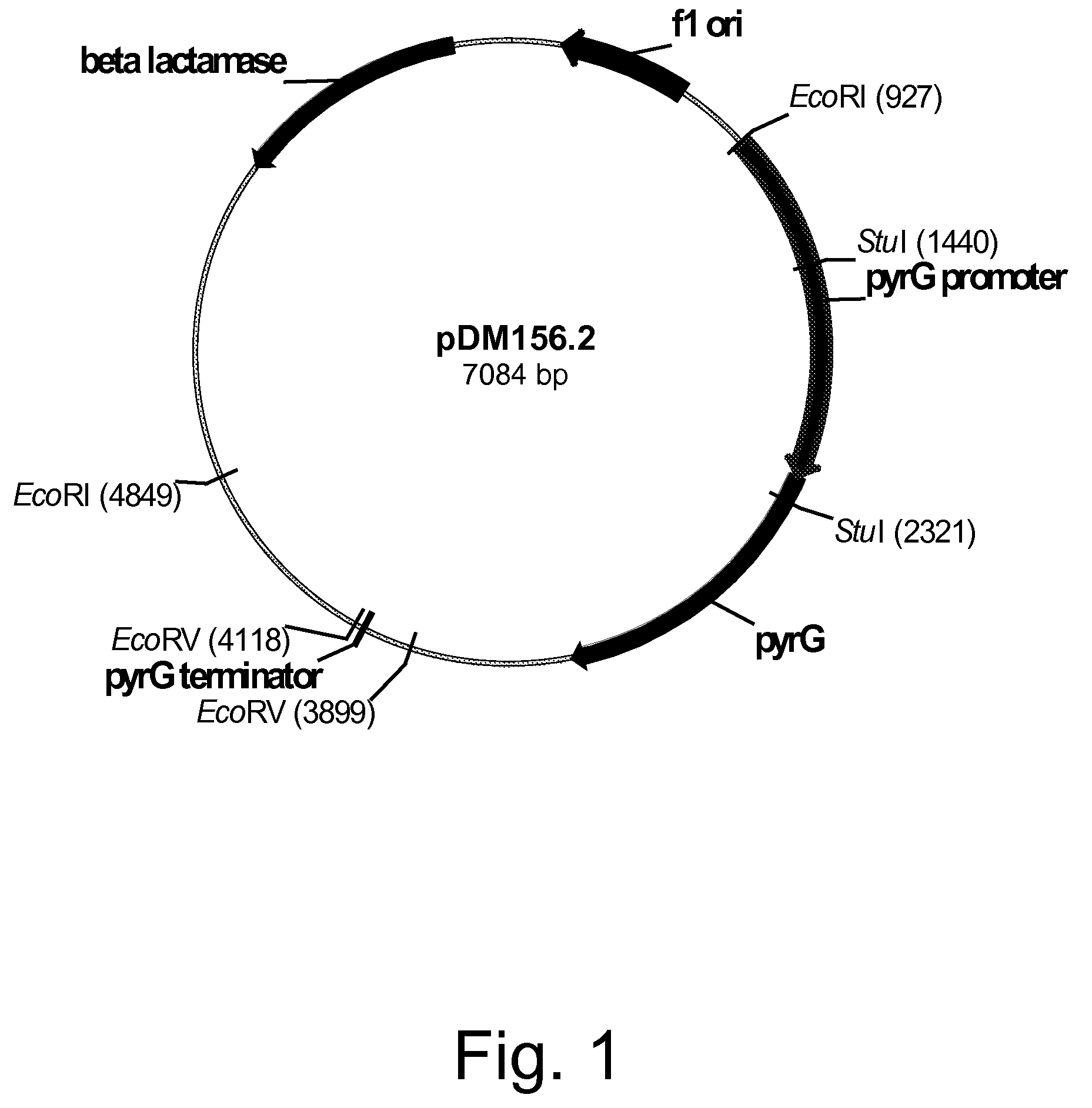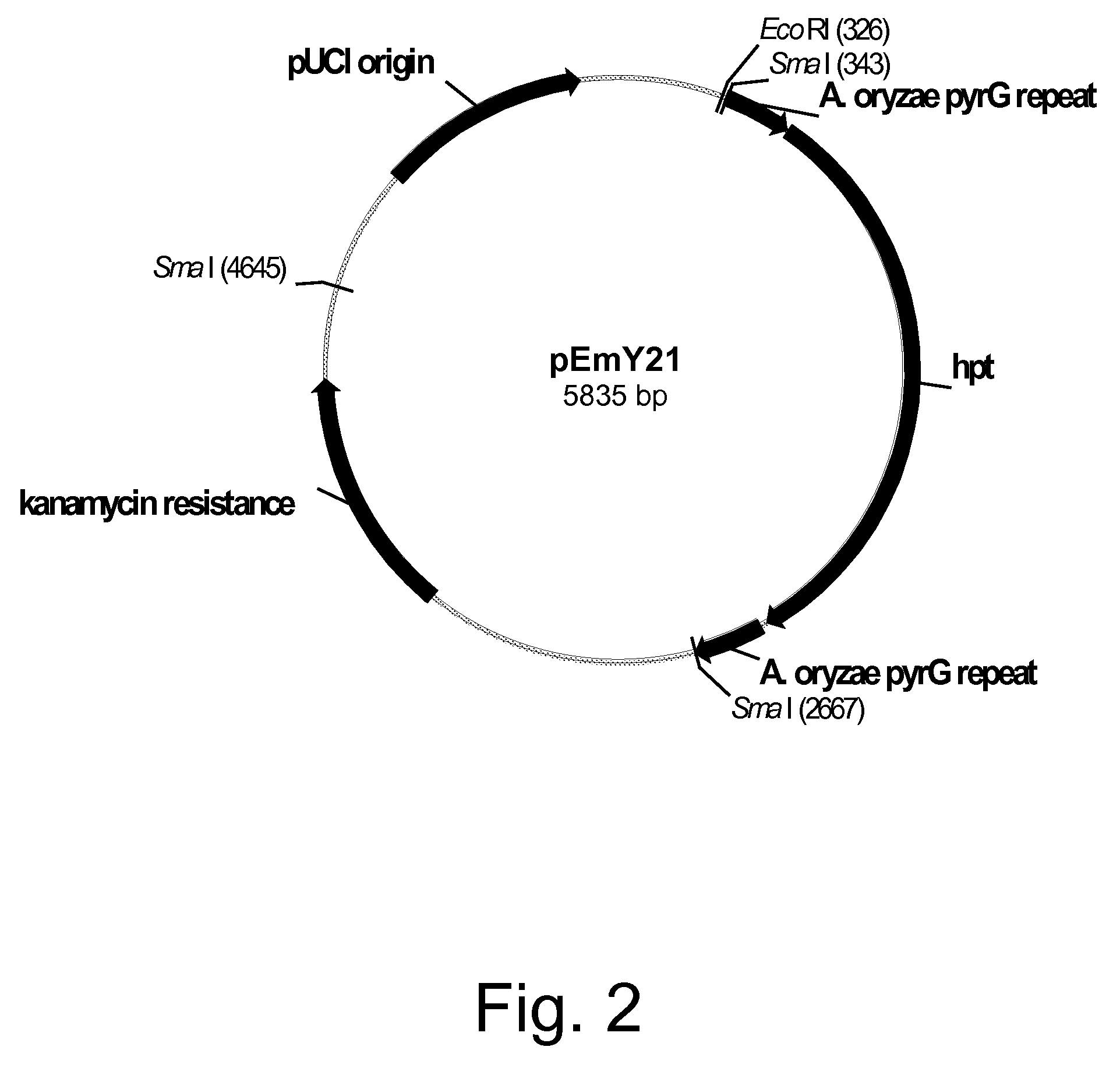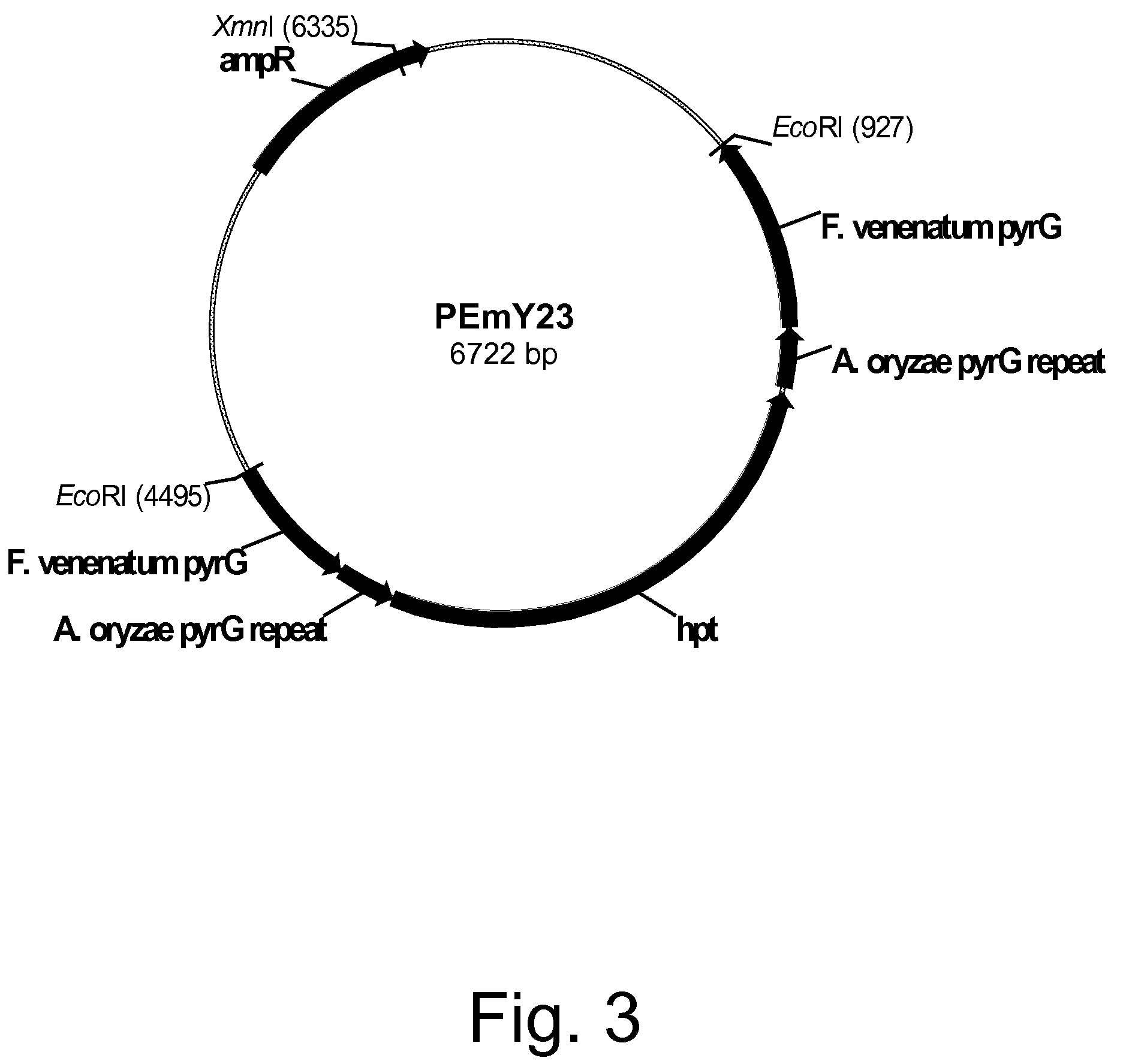Methods for producing polypeptides in enzyme-deficient mutants of Fusarium venenatum
a technology of fusarium venenatum and mutant strains, which is applied in the direction of lyases, carbon-carbon lyases, bulk chemical production, etc., can solve the problem of unoptimized fertilization
- Summary
- Abstract
- Description
- Claims
- Application Information
AI Technical Summary
Benefits of technology
Problems solved by technology
Method used
Image
Examples
example 1
Fusarium venenatum Transformation Procedure
[0249]One hundred micrograms of each of the deletion cassettes described in the following examples were digested with either Bst Z171 / Bam HI (Example 11) or Not I (Examples 14, 16, 28 and 30). Each digestion reaction was purified by 1% agarose gel electrophoresis in TAE buffer and a DNA band was extracted using a QIAQUICK® Gel Extraction Kit. The resulting purified DNA was concentrated in a 1.5 ml microfuge tube by ethanol precipitation with the addition of 10% reaction volume of 3 M sodium acetate pH 5 followed by 2.5 volumes of ice cold ethanol (94%) and incubation on ice for 20 minutes. The tube was then centrifuged at 15,000×g for 10 minutes in an EPPENDORF® 5424 bench-top centrifuge (Eppendorf, Hamburg, Germany). The supernatant was discarded and the pellet washed with 1 ml of ice cold 70% ethanol and centrifuged at 15,000×g for 5 minutes. The supernatant was discarded and the pellet allowed to air dry. The pellet was then resuspended ...
example 2
Southern Analyses
[0253]Fungal biomass was produced by inoculating 25 ml of M400 medium (Example 11) or M400 medium supplemented with 10 mM uridine (Examples 14, 16, 28 and 30) with four 1 cm agar plugs from 7 day old transformants generated as described in Examples 1 and 11. The cultures were incubated for 3 days at 28° C. with shaking at 150 rpm. Agar plugs were removed and the cultures were filtered through MIRACLOTH™. Harvested biomass was frozen with liquid nitrogen and the mycelia were ground using a mortar and pestle.
[0254]Genomic DNA was isolated using a DNEASY® Plant Maxi Kit (QIAGEN, Valencia, Calif., USA) according to the manufacturer's instructions except the lytic incubation period at 65° C. was extended to 1.5 hours from 10 minutes.
[0255]Two μg of genomic DNA were digested with the indicated restriction endonucleases in a 50 μl reaction volume at 37° C. for 22 hours. The digestion s were subjected to 1.0% agarose gel electrophoresis in TAE buffer. The DNA was fragmented...
example 3
Construction of Plasmid pDM156.2 Harboring the Genomic DNA Fragment Incorporating the Fusarium venenatum Orotidine-5′-monophosphate Decarboxylase (pyrG) Gene
[0257]A probe of a Neurospora crassa orotidine-5′-monophosphate decarboxylase (pyr-4) gene (SEQ ID NO: 1 for the DNA sequence and SEQ ID NO: 2 for the deduced amino acid sequence) was prepared by PCR incorporating digoxigenin-labeled deoxyuridine-triphosphate (dUTP) and the primers described below.
[0258]
Primer (sense):5′-GTCAGGAAACGCAGCCACAC-3′(SEQ ID NO: 3)Primer (anti-sense):5′-AGGCAGCCCTTGGACGACAT-3′(SEQ ID NO: 4)
[0259]Plasmid pFB6 (Buxton et al, 1983, Molecular and General Genetics 190: 403-405) was digested with Hind III and the digestion purified by 1% agarose gel electrophoresis using TAE buffer. A 1.1 kb pyr-4 fragment was excised and agarose-extracted using a QIAQUICK® Gel Extraction Kit according to the manufacturer's suggested protocols.
[0260]The amplification reaction (50 μl) was composed of 1× Taq DNA Polymerase Buf...
PUM
| Property | Measurement | Unit |
|---|---|---|
| volume | aaaaa | aaaaa |
| temperature | aaaaa | aaaaa |
| Tm | aaaaa | aaaaa |
Abstract
Description
Claims
Application Information
 Login to View More
Login to View More - R&D
- Intellectual Property
- Life Sciences
- Materials
- Tech Scout
- Unparalleled Data Quality
- Higher Quality Content
- 60% Fewer Hallucinations
Browse by: Latest US Patents, China's latest patents, Technical Efficacy Thesaurus, Application Domain, Technology Topic, Popular Technical Reports.
© 2025 PatSnap. All rights reserved.Legal|Privacy policy|Modern Slavery Act Transparency Statement|Sitemap|About US| Contact US: help@patsnap.com



